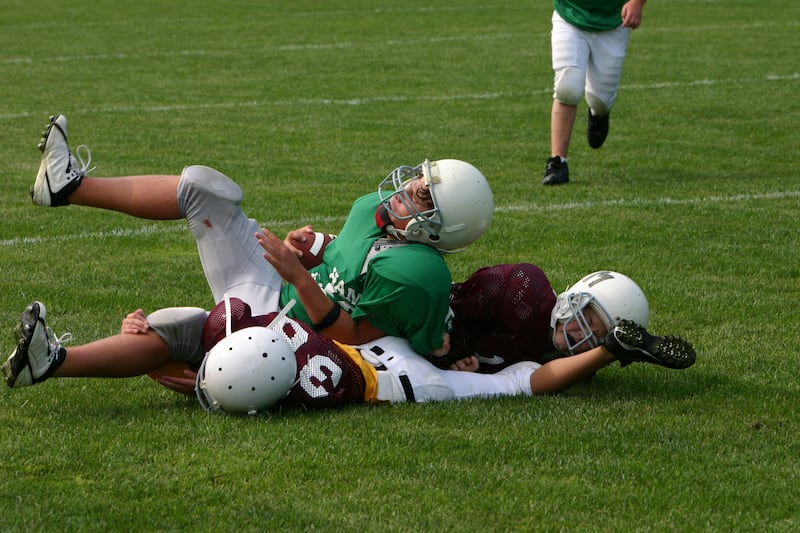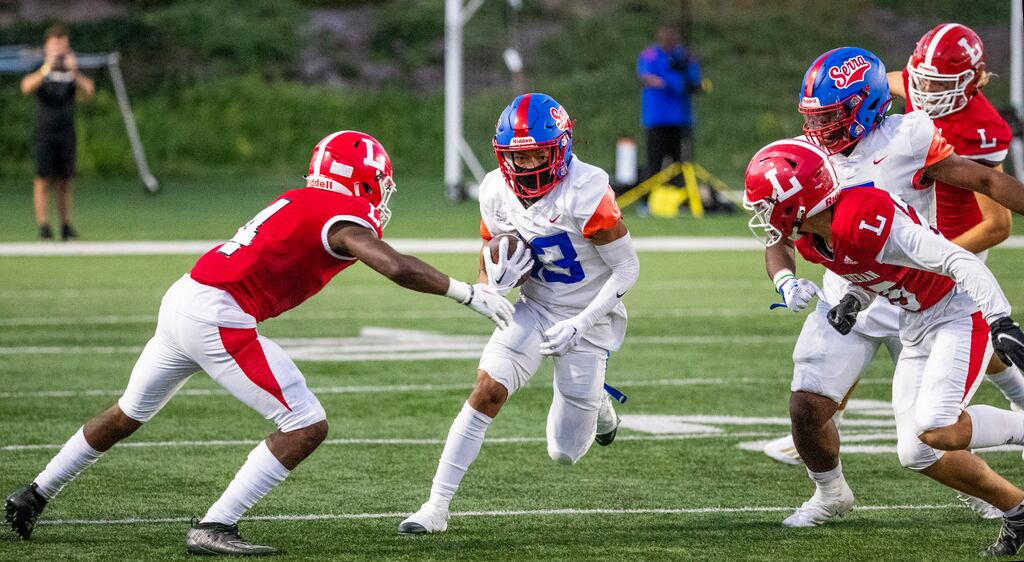Jayvion Taylor was a member of the junior varsity football team at Hopewell High School in Virginia. Known and loved by all as “Baby Jay”, this was the second year he’d made the squad as a promising wide receiver who could also fill in at cornerback.
On the afternoon of August 5th, after 40 minutes of “light drills” in training, he collapsed. The heat index that afternoon fluctuated between 35 and 36 degrees and, as they waited for the ambulance to come, coaches used ice and cold water to try to cool his overheating body. He died upon reaching HCA TriCities Hospital. He was 15.
Described as a shining light around campus, Caden Tellier started at quarterback for the John T. Morgan Academy varsity in its season opener against Southern Academy in Selma, Alabama, on the last Friday night of August. As good a runner with the ball as he was a thrower, he scampered in for a touchdown in the first half.
On a routine play in the third quarter, he was tackled, thrown to the ground and suffered a brain injury when his head hit the turf. Airlifted to UAB Hospital in Birmingham, he died there the next day. A devout Christian who was also an exceptional baseball player, Tellier was 16.
READ MORE
Taylor and Tellier are just two of eight American high school students who went out to play gridiron in the first month of the new season and never came home. The only thing more shocking than the death toll was the understated national reaction to it. There has been no great outcry. Media coverage has been rather muted. Calls for reform barely audible.
[ College football, the rancid corner of the American sports worldOpens in new window ]
Aside from one grieving father starting a well-intentioned campaign to promote the use of softshell helmets known as Guardian Caps that are supposed to reduce head injuries, everybody else seems to just accept this stuff happens. Kids will die on football fields due to head hits, heat stroke and cardiac events. All part of the demented game.
“Some jurisdictions outlaw tanning beds until the age of 21,” said Matt Chaney in Irvin Muchnick’s excellent Without Helmets or Shoulder Pads – The American Way of Death in Football Conditioning. “You can’t smoke cigarettes in the United States until the age of 21. You can’t drive a car until you’re 16. Yet you’re allowed to strap on a football helmet and ram each other from the age of five.”
The inherent physicality of the code means that blows to the head and chest are an inevitable consequence of every contest. And always have been. The difference today is that the average American high school player is significantly bigger and stronger than previous generations. Like schools’ rugby players in Ireland, most of those still donning helmets and pads in their late teens have been hitting the gym for years. It’s not unusual for some muscle-bound linemen to tip the scale at close to 20 stone and understanding how much unseen damage gets done every time two of these behemoths collide doesn’t require a medical degree. Or knowledge that 11 kids died playing gridiron in 2022.
There’s a deeper cultural issue at play here. Too many martinet coaches still adhere to a primitive ethos that involves training methods designed to breed toughness in their young charges and to root out those perceived to be weak. So far, so very Spartan. With ridiculous amounts of running often prized parts of what are essentially hazing rituals, the excessive machismo of preening adults often places kids in grave danger.
Two-a-day sessions are standard in most schools once students come back from summer holidays, punishing workouts conducted under the sapping August sun explain why an independent study established that a high school footballer is 11 times more likely to suffer heat stroke than kids from all other sports combined. Over 50 of them have died from it since 1992.

Usually wearing “inspirational” team T-shirts that bear slogans such as “pain is weakness leaving the body,” these young lads are also subjected to lunatic tests of strength and willpower designed, no seriously, to build character.
A 16-year-old defensive back died during preseason training camp on Long Island in 2017 when he was struck by a 400lb log. He and four team-mates, all teenage boys, had been hoisting the wood above their heads, replicating a conditioning exercise used by Navy Seals during Hell Week, an intense physical and mental examination of adults designed to prepare them for special operations warfare. Or high school football.
I once came upon a gridiron encounter involving seventh and eighth graders, some as young as 12 whose bulbous helmets looked too big for their bodies, others as old as 14, already jacked like grown men. Both teams were strutting around the field, everything was in place to start but there ensued a mysterious delay.
Then it was explained to me that proceedings couldn’t get under way until an ambulance with an emergency medical services crew was parked by the fence. At the ready. The game is so intrinsically brutal and violent that, before a pass can be thrown, trained medical professionals must be on hand to rush injured kids to a nearby hospital. Nobody else watching thought this a seriously disturbing element of the suburban tableau.
When an emergency is an anticipated part of action involving children, surely it’s no longer an emergency? And maybe it’s time this should no longer be considered a sport for kids.

















